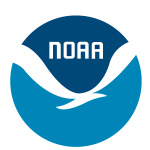- Industrie: Government
- Number of terms: 30456
- Number of blossaries: 0
- Company Profile:
NOAA Coral Reef Conservation Program, National Oceanic and Atmospheric Administration, U.S. Department of Commerce
Costs and benefits as seen from the perspective of society as a whole. These differ from private costs and benefits in being more inclusive (all costs and benefits borne by some member of society are taken into account) and in being valued at social opportunity cost rather than market prices, where these differ. Sometimes termed "economic" costs and benefits.
Industry:Fishing
1. A measure of the size of consumer surplus and producer surplus. An increase in the combined surpluses is an increase in economic efficiency; 2. In commercial fishing, the point at which the added cost of producing a unit of fish is equal to what buyers pay. Producing fewer fish would bring the cost lower than what buyers are paying. Producing more fish would raise the cost higher than what buyers are paying. Harvesting at the point of economic efficiency produces the maximum economic yield (MEY).
Industry:Fishing
1. Distribution of the opportunity to fish among user groups or individuals. The share a user group gets is sometimes based on historic harvest amounts; 2. A quantity of catch, effort, or biomass attributed to a person, a vessel, and a fishing company. The allocation can be absolute (e.g. a number of tons) or relative (e.g. a percentage of the annual allowable catch).
Industry:Fishing
Costs associated with the disruption of communities, households, and related social structures resulting in the loss of human potential.
Industry:Fishing
Benefits to humans gained through utilization of resources, including both economic and social benefits.
Industry:Fishing
A population that consists of a series of physically separate subpopulations linked by dispersal. Metapopulations persist as a result of a balance between extinctions of subpopulations and recolonization of habitat patches (and hence reestablishment of subpopulations).
Industry:Fishing
1. In general, the possibility of something undesirable happening, of harm or loss. A danger or a hazard. A factor, thing, element, or course involving some uncertain danger; 2. In decision-theory, the degree or probability of a loss; expected loss; average forecasted loss. This terminology is used when enough information is available to formulate probabilities; 3. The probability of adverse effects caused under specified circumstances by an agent in an organism, a population, or an ecological system.
Industry:Fishing
A minimum or maximum limit on the size of fish that may be legally be caught.
Industry:Fishing
A plan developed by the Secretary of Commerce in response to an emergency, a council's failure to act, or for highly migratory species.
Industry:Fishing
A regulatory impact review (RIR) is required by the National Marine Fisheries Service (NMFS) for all regulatory actions of public interest. It is the basis for determining whether any proposed regulations are a "significant regulatory action" under certain criteria provided in Executive Order 12866 and whether the proposed regulations will have a "significant economic impact on a substantial number of small entities" in compliance with the Regulatory Flexibility Act (RFA).
Industry:Fishing
